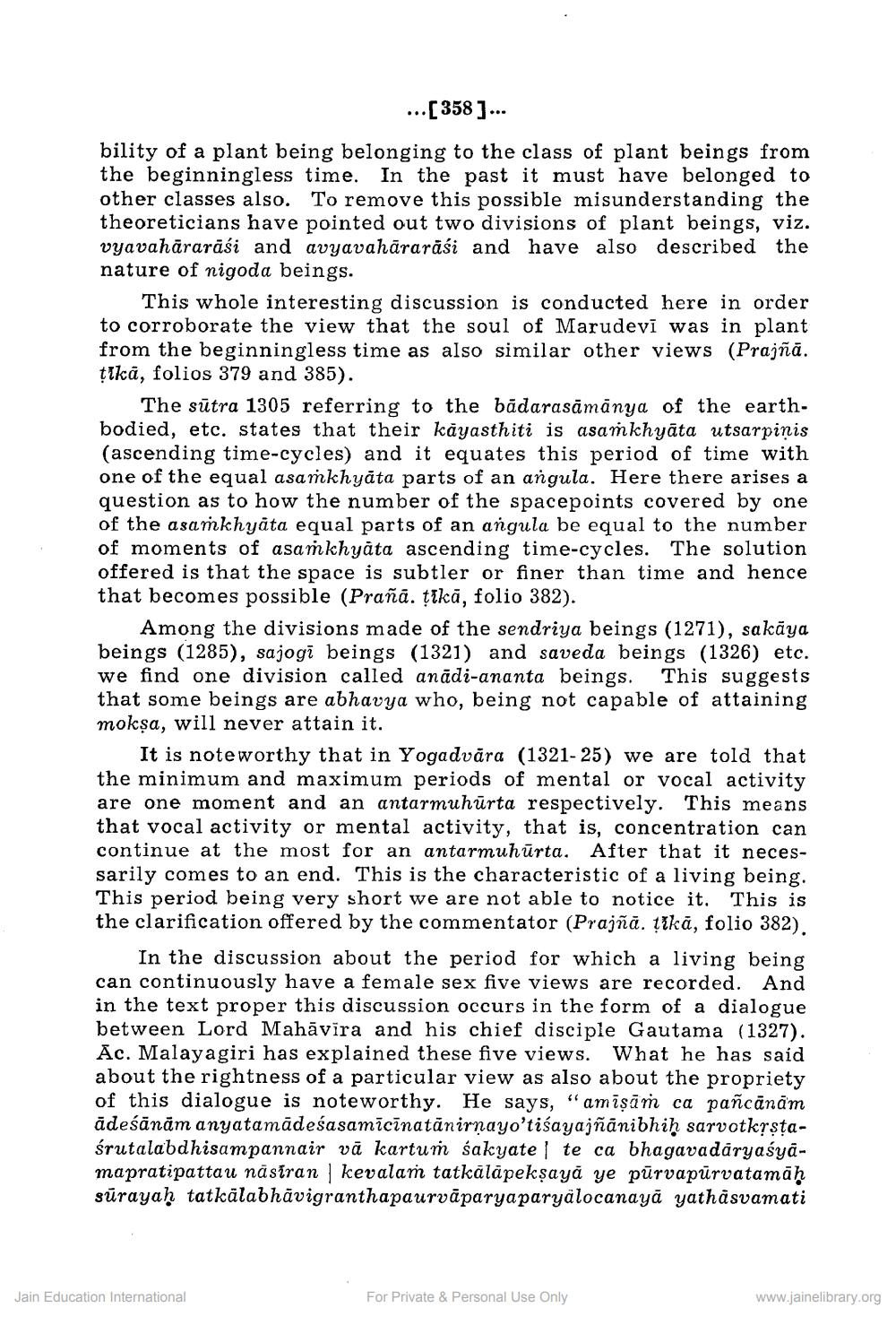________________
...[358]...
bility of a plant being belonging to the class of plant beings from the beginningless time. In the past it must have belonged to other classes also. To remove this possible misunderstanding the theoreticians have pointed out two divisions of plant beings, viz. vyavahararasi and avyavahararasi and have also described the nature of nigoda beings.
This whole interesting discussion is conducted here in order to corroborate the view that the soul of Marudevi was in plant from the beginningless time as also similar other views (Prajñā. ṭika, folios 379 and 385).
The sutra 1305 referring to the badarasāmānya of the earthbodied, etc. states that their kayasthiti is asaṁkhyāta utsarpiņis (ascending time-cycles) and it equates this period of time with one of the equal asaṁkhyāta parts of an angula. Here there arises a question as to how the number of the spacepoints covered by one of the asamkhyāta equal parts of an angula be equal to the number of moments of asamkhyāta ascending time-cycles. The solution offered is that the space is subtler or finer than time and hence that becomes possible (Prañā. ṭīkā, folio 382).
Among the divisions made of the sendriya beings (1271), sakāya beings (1285), sajogi beings (1321) and saveda beings (1326) etc. we find one division called anadi-ananta beings. This suggests that some beings are abhavya who, being not capable of attaining mokṣa, will never attain it.
It is noteworthy that in Yogadvāra (1321-25) we are told that the minimum and maximum periods of mental or vocal activity are one moment and an antarmuhurta respectively. This means that vocal activity or mental activity, that is, concentration can continue at the most for an antarmuhurta. After that it necessarily comes to an end. This is the characteristic of a living being. This period being very short we are not able to notice it. This is the clarification offered by the commentator (Prajña. tika, folio 382).
In the discussion about the period for which a living being can continuously have a female sex five views are recorded. And in the text proper this discussion occurs in the form of a dialogue between Lord Mahavira and his chief disciple Gautama (1327). Ac. Malayagiri has explained these five views. What he has said about the rightness of a particular view as also about the propriety of this dialogue is noteworthy. He says, "amiṣam ca pañcānām adeśānām anyatamādeśasamīcīnatānirnayo'tiśayajñānibhiḥ sarvotkṛṣṭaśrutalabdhisampannair va kartum sakyate te ca bhagavadaryasyamapratipattau nasiran kevalam tatkalāpekṣaya ye purvapūrvatamāḥ surayaḥ tatkalabhāvigranthapaurvāparyaparyälocanaya yathāsvamati
Jain Education International
For Private & Personal Use Only
www.jainelibrary.org




